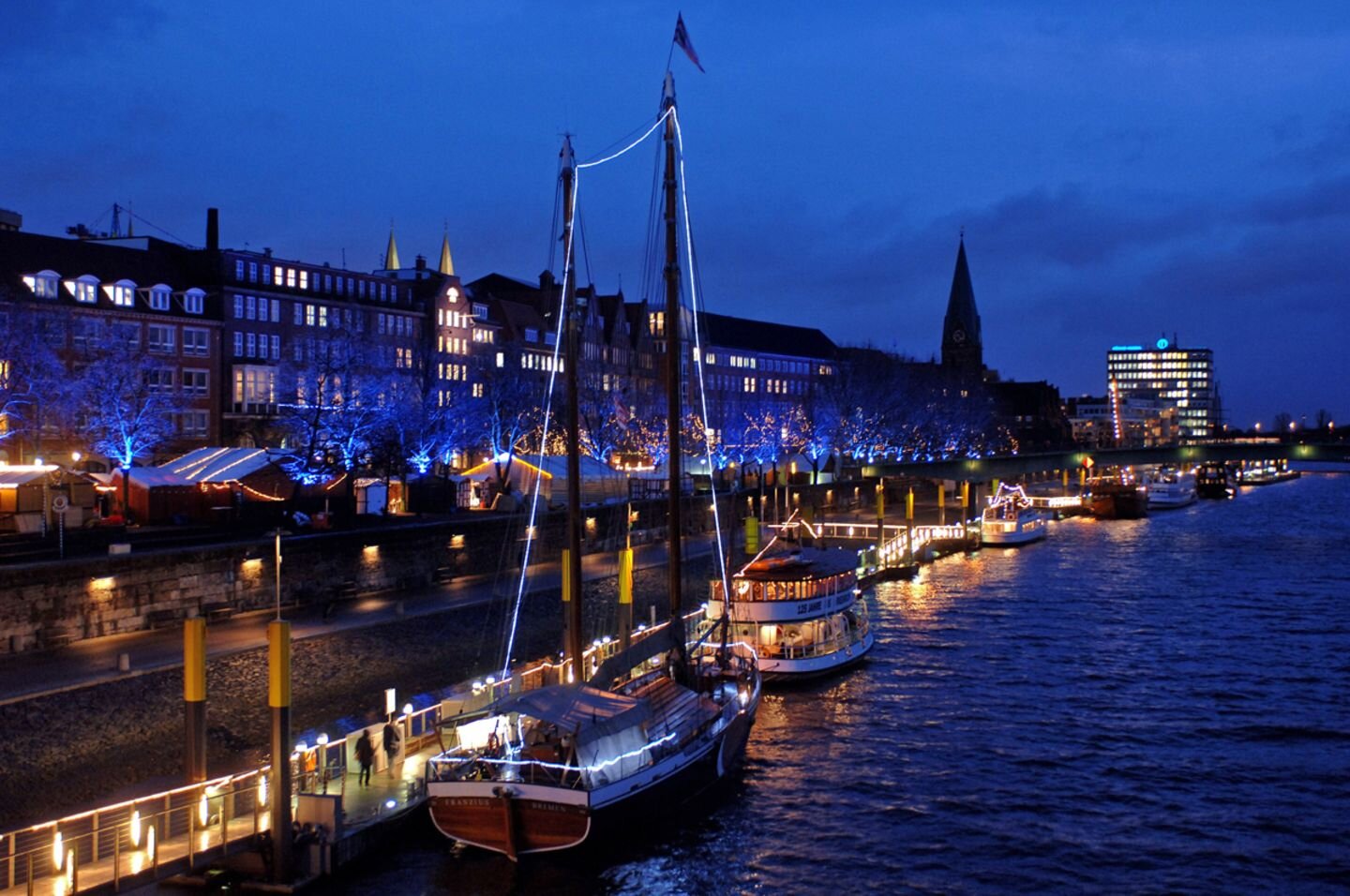
Local inhabitants and traders settled the region between St Martini's Church and Zweite Schlachtpforte in 1247, after receiving permission from Archbishop Gerhard II. Those with the privilege of operating water mills had to maintain the wooden piles used to fortify the river bank in 1250. Both the Schlachte and the Balge were utilized as harbours for wood (for firewood) and limestone in the 13th century, while the Balge's banks eventually became Bremen's principal port. Both harbours, the Balge for seagoing ships and the Schlachte for flat-bottomed vessels and river barges, were used until the 16th century.
The Schlachte became Bremen's major harbour until the beginning of the 19th century as a result of the Weser's silting in the early 17th century. The Schlachte was an unofficial part of Bremen until 1557. The look of the Schlachte did not alter much between 1600 and 1830, and the only improvements in port equipment were to the large cranes. From St Martini Church to the Kornhaus, it was 450 meters long. It was bordered on the town side by a series of half-timbered buildings. A small extension to the Schlachte was built in response to an increase in freight in the first half of the nineteenth century, but the introduction of the railway in 1860 brought dramatic changes to Bremen's harbors, particularly after Bremerhaven was connected to the rail network in 1862. After that, the Schlachte was no longer used as a port for the city.
The Schlachte is another must-see district in Bremen. This lovely Old Town pedestrian zone runs along the east bank of the Weser River and dates back to the 13th century. This picturesque region was once the city's original port and harbor, and was named after the wooden piles put deep into the ground to hold the riverbank. It fell out of favor as the shipping industry evolved, with larger vessels becoming the norm. The Schlachte has been revitalized and is now a beautiful area to spend time. In fact, wandering the promenade or stopping in at one of the many cafés and restaurants situated in the ancient warehouses is one of the most popular things to do in Bremen at night.
Along with their more modern cousins, you'll love seeing the many old historic vessels anchored here, some of which now operate as distinctive hotels and restaurants. Others are designed to provide tourists with enjoyable riverboat cruises. River trips up and down the Weser are available from a variety of ships anchored along the Schlachte. There are also landing stages accessible for pleasure craft visitors to the city.
Restaurants along the seafront and on board several of the quayside ships serve both regional specialties and international cuisine. The youth hostel and hotel ships both have rooms available. During the summer, there are a variety of special events, such as a regatta, flea markets, and a barbeque festival.
BY MUHAMMAD SHAHZAIB TAHIR AWAN (PAKISTAN) | CLASS OF 2022
